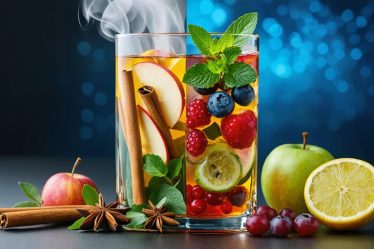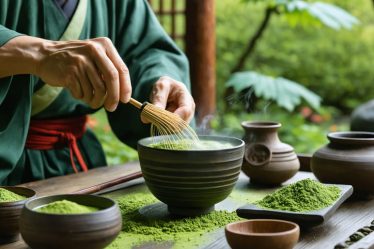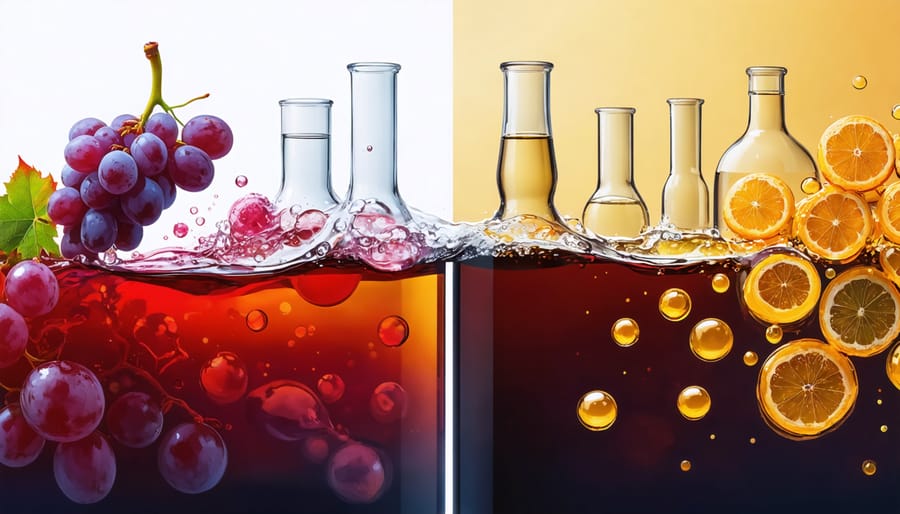
The magical transformation of grape juice into wine begins with fermentation – nature’s most elegant chemical dance. Picture tiny yeast cells working tirelessly, converting sweet grape sugars into alcohol and unleashing complex flavors that make each bottle unique. While mastering wine tasting fundamentals helps us appreciate the end result, understanding fermentation reveals wine’s true storytelling power. This ancient process, perfected over thousands of years, combines science and artistry in perfect harmony. Whether you’re swirling a glass of bold Cabernet or crisp Chardonnay, you’re experiencing the beautiful results of microscopic organisms transforming humble grape juice into something extraordinary. Let’s explore how this fascinating process shapes every aspect of wine’s character, from its aromatic bouquet to its satisfying finish.
The Magic of Yeast: Nature’s Wine Artist
Wild vs. Cultured Yeast
Think of wild versus cultured yeast as the difference between a spontaneous dinner party and a carefully planned event – both can be fantastic, just in different ways! Traditional winemaking relies on wild yeasts naturally present on grape skins and in the vineyard environment, creating unique characteristics that truly reflect the terroir. These wild fermentations can lead to fascinating complexity in flavor development in wine, often producing distinctive notes that tell the story of where the grapes were grown.
However, like any adventure, wild fermentation comes with its uncertainties. The process can be unpredictable, sometimes resulting in stuck fermentations or unexpected flavors. That’s why many modern winemakers opt for cultured yeasts, which offer more control and consistency. These carefully selected strains ensure reliable fermentation and can even be chosen to enhance specific characteristics in the final wine.
Neither approach is inherently better – it’s all about the winemaker’s vision and style. Some of the most celebrated wines in the world use wild fermentation, while others achieve excellence through carefully selected cultured yeasts. The beauty of modern winemaking is that we can embrace both traditions, creating wines that speak to both heritage and innovation.
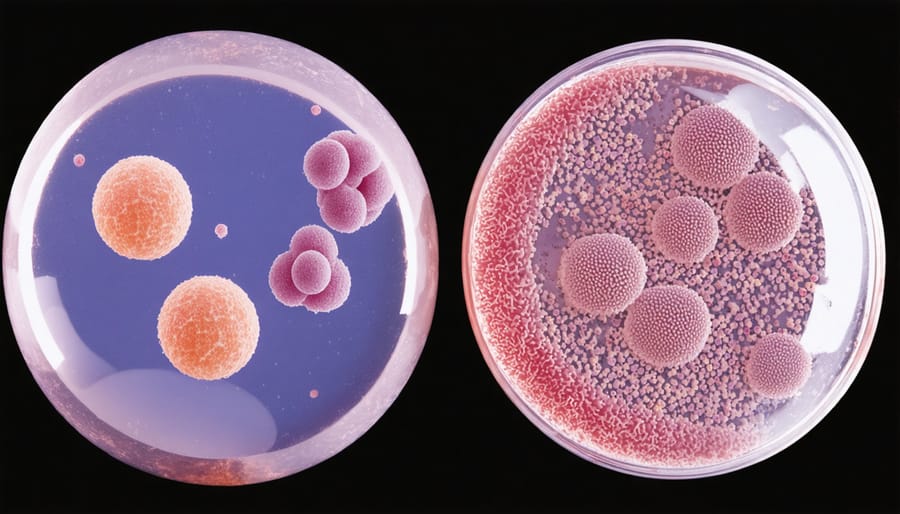
How Temperature Shapes Your Wine
Have you ever noticed how a cozy room feels different from a chilly one? Temperature plays just as crucial a role in shaping your wine’s personality during fermentation. When I first started exploring winemaking, I was amazed to discover how just a few degrees could transform the final result in your glass.
Think of red wines as the warm and fuzzy friends of the wine world. They typically ferment at warmer temperatures, around 68-85°F (20-29°C), which helps them develop those bold, fruity flavors and rich textures we love. This warmth encourages the grape skins to release more color and tannins, giving red wines their characteristic depth.
White wines, on the other hand, are like a refreshing summer breeze. They prefer it cool, usually fermenting between 45-65°F (7-18°C). This lower temperature preserves their delicate aromas and creates those crisp, fresh flavors that make white wines so delightful on a warm day.
The winemaker’s choice of temperature isn’t just about tradition – it’s a careful balance of art and science that helps create the perfect expression of each grape variety. Next time you sip your favorite wine, remember that its character was carefully crafted through temperature control.
From Grape to Glass: The Fermentation Journey
Primary Fermentation: The First Dance
Imagine walking into a winery during harvest season – there’s an unmistakable buzz in the air, and I’m not just talking about the excited visitors! The first stage of fermentation is truly where the magic begins, transforming sweet grape juice into what will eventually become our beloved wine.
During primary fermentation, those precious grape sugars start their beautiful dance with yeast. The result? A fascinating display of bubbling activity that looks like nature’s own champagne party. You’ll notice a gentle fizzing sound, accompanied by a cap of grape skins rising to the surface of red wines – winemakers lovingly call this the “cap.”
This initial fermentation typically lasts between 5-14 days, depending on factors like temperature and the type of wine being made. The warmer the environment, the more energetic the fermentation – think of it as the yeast getting their groove on! During this time, you’ll notice the sweet grape aroma gradually transforming into that distinctive wine smell we all know and love.
What I find particularly fascinating is how the color of red wines develops during this stage. As the juice mingles with the grape skins, it takes on those beautiful ruby and purple hues. White wines, on the other hand, tend to ferment more quietly, already separated from their skins, but they’re working just as hard behind the scenes.
It’s important to monitor this process carefully – like any good dance, timing and temperature are everything!
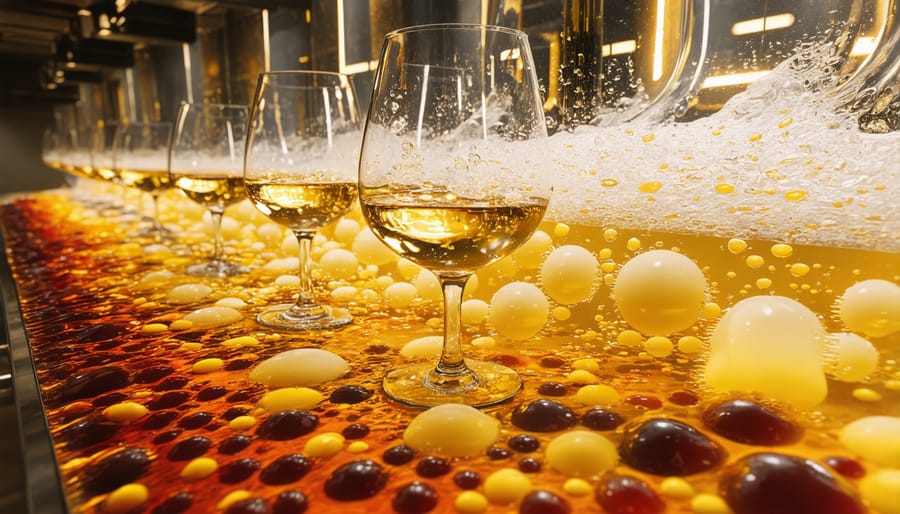
Secondary Fermentation: The Gentle Rest
Think of secondary fermentation as wine’s beauty sleep – a gentle transformation that turns good wine into something truly special. This process, also known as malolactic fermentation, is where tart malic acid (think green apple tartness) converts into softer lactic acid (imagine the smoothness of butter).
I remember the first time I learned about this process during a vineyard tour in Napa Valley. Our guide explained it beautifully: “It’s like the wine is getting a warm, comforting hug.” And that’s exactly what happens! This natural process softens those sharp edges, especially in red wines and certain fuller-bodied white wines like Chardonnay.
During this phase, beneficial bacteria work their magic, typically over several weeks or months. The wine develops those lovely buttery, creamy notes that many of us adore in our favorite Chardonnays. For red wines, it helps create that velvety mouthfeel that makes them so enjoyable to sip.
Not all wines go through this process – and that’s perfectly fine! Some wines, particularly crisp whites like Sauvignon Blanc, are often better without it, maintaining their bright, zesty character. It’s all about what style the winemaker wants to achieve, much like how we all have our own preferred way of expressing ourselves.
Red vs. White: A Tale of Two Fermentations
Have you ever wondered why red and white wines taste and feel so different? The secret lies in their unique fermentation journeys. As a wine enthusiast who’s spent countless evenings sharing stories over both varieties, I can tell you that these differences are what make each wine special.
For red wines, the process is like steeping tea – the grape skins, seeds, and sometimes stems stay with the juice during fermentation. This extended contact is what gives red wines their rich color, fuller body, and those lovely tannins that make your mouth feel slightly dry. The fermentation typically happens at warmer temperatures, around 68-85°F (20-29°C), which helps extract more of those bold flavors and complex compounds we love in our reds.
White wine fermentation, on the other hand, is more like brewing fresh lemonade. The grape skins are separated from the juice right after pressing, leading to a clearer, crisper result. The process happens at cooler temperatures, usually between 50-65°F (10-18°C), which helps preserve those delicate floral aromas and fresh fruit flavors that make white wines so refreshing.
One of my favorite things about understanding these differences is how it enhances the wine-drinking experience. When I’m sipping a bold Cabernet Sauvignon, I can appreciate those warm-fermentation flavors, while a crisp Chardonnay reminds me of its cool, clean fermentation journey.
The choice between these methods isn’t just about tradition – it’s about creating distinct flavor profiles that suit different occasions, foods, and personal preferences. Whether you’re team red or team white, knowing these differences adds an extra layer of appreciation to every glass.
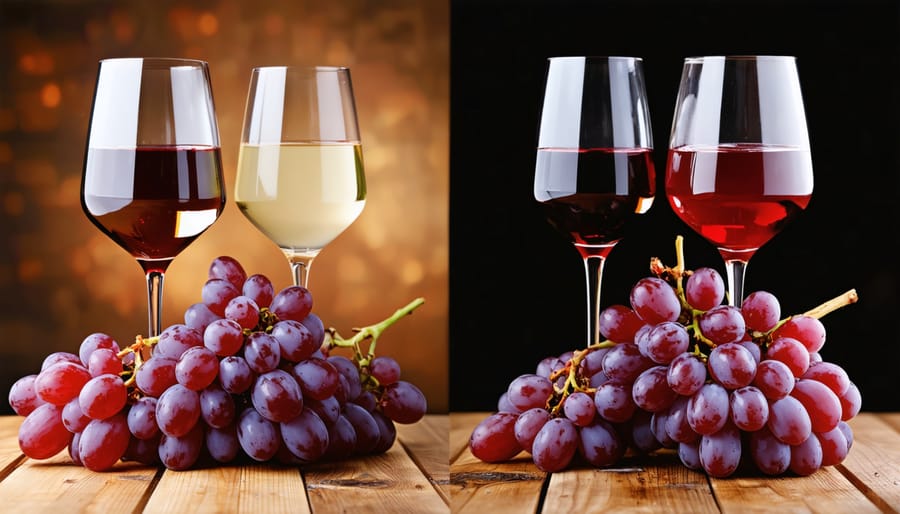
Common Fermentation Questions Answered
Let’s dive into some of the most common questions I hear from fellow wine enthusiasts about fermentation. Trust me, you’re not alone in wondering about these!
Q: How long does wine fermentation typically take?
A: Primary fermentation usually takes 5-10 days, while secondary fermentation can last anywhere from a few weeks to several months, depending on the wine style. Think of it like baking bread – some loaves need more time to develop their flavors!
Q: What temperature is best for wine fermentation?
A: Red wines typically ferment between 68-86°F (20-30°C), while white wines prefer it cooler at 54-68°F (12-20°C). Just like we’re more comfortable in certain temperatures, yeast has its sweet spot too!
Q: Why do some wines bubble during fermentation and others don’t?
A: All wines bubble during active fermentation as yeast converts sugar to alcohol, releasing carbon dioxide. However, some fermentations are more vigorous than others, just like how some of us are morning people and others aren’t!
Q: Can fermentation go wrong?
A: Yes, fermentation can be affected by temperature fluctuations, contamination, or poor yeast health. That’s why winemakers are so meticulous about cleanliness and monitoring the process. Once fermentation is complete, knowing proper wine preservation techniques becomes crucial.
Q: How do I know when fermentation is complete?
A: Winemakers measure sugar levels, but at home, you can look for signs like decreased bubbling and a clearer appearance. It’s like waiting for bread to rise – there are visual cues that tell you when it’s ready!
The next time you raise a glass of your favorite wine, take a moment to appreciate the intricate dance of science and artistry that brought it to life. Fermentation isn’t just a chemical process – it’s a testament to centuries of winemaking tradition, carefully preserved and perfected by passionate vintners around the world. Each bottle tells a story of careful grape selection, precise timing, and the delicate balance of environmental factors that transform simple grape juice into something extraordinary.
Whether you prefer a crisp Chardonnay or a bold Cabernet Sauvignon, remember that your wine has undergone a fascinating journey of transformation. The bubbling of fermentation tanks, the careful monitoring of sugar levels, and the expert decisions about when to press or punch down – these are all part of the beautiful choreography that creates the wines we love.
Next time you’re sharing a bottle with friends, why not spark a conversation about the fermentation process? You might be surprised how knowing the story behind your wine enhances your appreciation of what’s in your glass. After all, great wine isn’t just about the end product – it’s about understanding and celebrating the artisanal process that makes each bottle unique.


